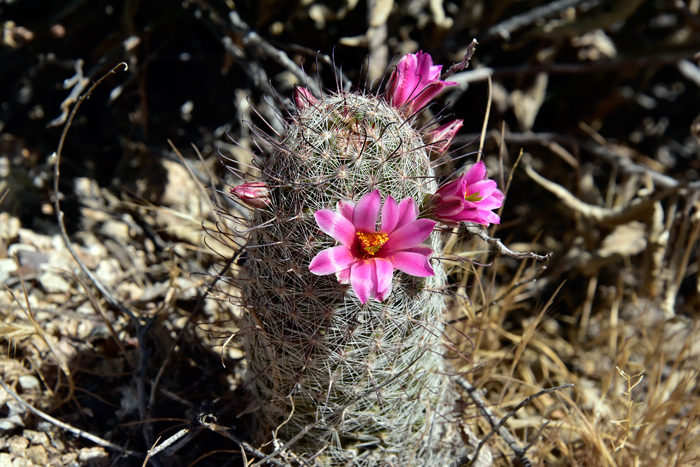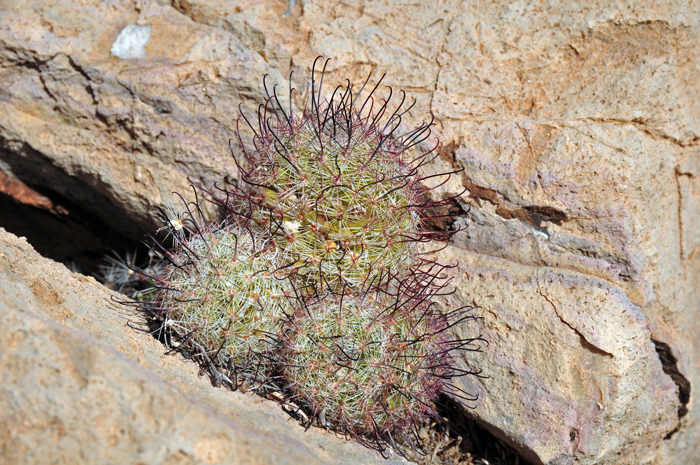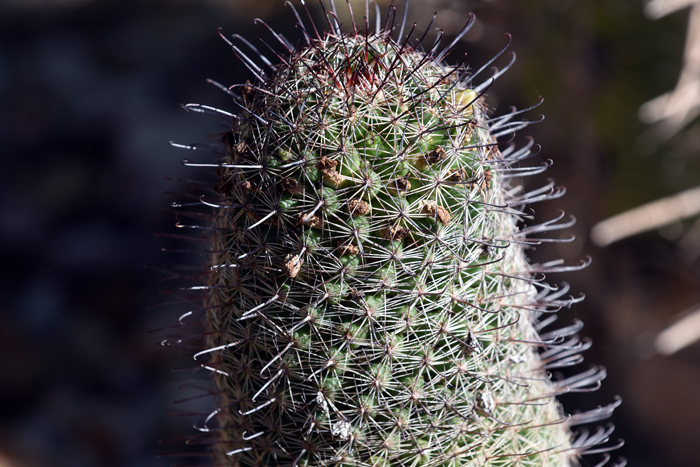Mammillaria grahamii, Graham's Nipple Cactus




Scientific Name: Mammillaria grahamii
Common Name: Graham's Nipple Cactus
Also Called: Arizona Fishhook Cactus, Graham Pincushion Cactus (Spanish: Cabeza de Viejo, Choyita)
Family: Cactaceae, Cactus Family
Synonyms: (Mammillaria grahamii var. grahamii, Mammillaria grahamii var. oliviae, Mammillaria microcarpa, Mammillaria microcarpa var. auricarpa, Mammillaria milleri, Mammillaria oliviae)
Status: Native
Duration: Perennial
Size: 12 inches or less.
Growth Form: Shrub; 1 or several stems, upper portions not enlarged; stems with tubercles (nipples), stems spheric to cylindric.
Leaves: Leaves modified into spines emerging from areoles; spines 26 to 33 per areole, glabrous, radial spines 17 to 35 per areole whitish or pale tan, bristle-like, central spines 3 to 4 per areole, 1 to 3 spines hooked, reddish to purplish brown to almost black and rarely golden brown.
Flower Color: Light pink, dark pink centers, stigmas lobes yellow green to green; 1 or more flowers; outer perianth parts minutely fringed, inner tepals bright rose pink to rose purple; fruit fleshy, green and turning bright red, scarlet to carmine, barrel shaped and elongating until the color change complete, fruits often trimmed with floral remnants.
Flowering Season: April to September across its geographic range, fruiting September to March.
Elevation: 300 to Up to 4,500 feet.
Habitat Preferences: Chihuahuan and Sonoran desert scrub communities, grasslands, interior chaparral, oak woodlands, alluvial slopes, hills, canons, silty, sandy, gravelly or rocky soils.
Recorded Range: Graham's Nipple Cactus is found in the southwestern United States in AZ, CA, NM, TX. This specie is also native to northwest Mexico in Chihuahua and Sonora.
North America & US County Distribution Map for Mammillaria grahamii.
U.S. Weed Information: No information available.
Invasive/Noxious Weed Information: No information available.
Wetland Indicator: No information available.
Threatened/Endangered Information: Arizona: Mammillaria grahamii, Graham's Nipple Cactus is salvage restricted.
In the Southwestern United States: Arizona has 9 species of Mammillaria, California has 3 species, Nevada and Utah each have 1 species, New Mexico has 6 species, Texas has 8 species. All data is approximate and subject to taxonomic changes.
Comments: The genus Mammillaria is from the Latin derivative of "mammilla" or a reference to the nipples on the stems which resemble mammary glands. The specific epithet "grahamii" is in honor of James Duncan Graham (1799-1865).
The scientific name has been changed multiple times because it is so variable across its geographic range and because of taxonomy problems in the Cactaceae family.
Graham's Nipple Cactus has been used for food and traded by southwestern United States indigenous peoples.
See complete listing of ethno-botanical uses at Native American Ethnobotany, University of Michigan, Dearborn.

